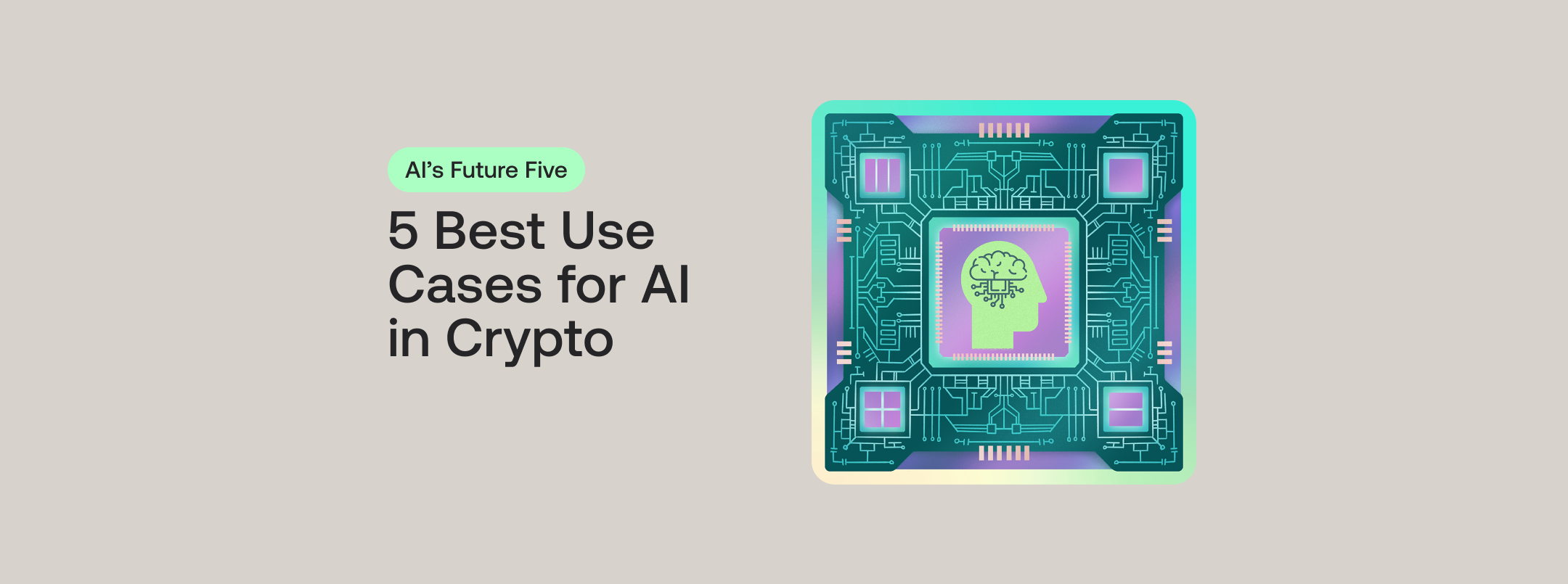5 Best Use Cases for AI in Crypto
For all the hype surrounding the marriage of AI and blockchain, there still seems to be no clear consensus on what use AI actually has in the world of crypto.Will it be a decentralized Chat GPT? A new high-powered market predictor that will remove humans from trading for good?


For all the hype surrounding the marriage of AI and blockchain, there still seems to be no clear consensus on what use AI actually has in the world of crypto.
Will it be a decentralized Chat GPT? A new high-powered market predictor that will remove humans from trading for good? Or just a novelty that will wear off in a few months?
In this article, you’ll learn the best use cases for AI in Crypto, and discover how they are (or are not) set to revolutionize the industry.
1. Decentralized GPU Computing Power
The most developed use case for AI in crypto is through decentralizing GPU computing power.
Both AI and crypto require significant processing power. AI, for its data processing and machine learning tasks, and crypto for mining and transaction verification.
Decentralized GPU Computing offers a way to solve this issue by distributing the computational load across a network of participants.
People with idle computing power can use blockchain to distribute their unused capacity to projects that need it for computationally intensive tasks. This provides a source of revenue for those with surplus computing power and makes high-powered computing accessible to a broader range of users.
Smaller entities or even individuals will be able to mine crypto as well as conduct complex AI tasks without needing expensive hardware.
2. AI Agents (DDAs)
AI Agents (DDAs) are sophisticated AI programs that offer a new level of efficiency and accuracy for traders.
They work by analyzing past data to make informed trading decisions. Unlike traditional trading where human emotions and biases can lead to poor decisions, DAAs rely solely on data, creating a level of precision that is hard to achieve manually.
These agents can process vast amounts of data and recognize patterns that would generally be invisible to human traders, allowing them to detect subtle market changes and potential risks, enabling more secure and informed trading decisions.
3. Data Sovereignty in AI and Crypto
Blockchain, on its own, can offer an optimal solution for data storage. Data stored on the blockchain cannot be controlled by one single entity, enhancing security and reducing the risk of manipulation or unauthorized access.
However, storage alone is not enough. A way to access and share the data stored on the blockchain in a secure and private way is also needed.
This is where AI comes in. AI can play a significant role in managing and processing this data. With its ability to analyze large datasets efficiently, AI can help in making sense of the complex information stored on blockchains.
AI algorithms can be designed to ensure that data handling sticks to certain pre-defined rules automatically. This allows data to be confirmed privately without revealing its details.
For example, you may need to confirm your identity to a bank. If your ID card was stored as encrypted data on the blockchain, you could sign a transaction that allows AI to confirm your identity without giving up any personal information to the bank directly.
Data sovereignty is not just about where data is stored or how it is used, but also about how it is protected and managed. The combination of blockchain and AI ensures data remains an asset rather than a liability in the digital age.
4. Market Predictions Powered by AI
AI is great at processing and analyzing large volumes of data. By utilizing advanced algorithms, AI can sift through vast amounts of market data, including trading volumes, price patterns, and even social media sentiment, to provide comprehensive market analysis.
One of the key elements in AI-powered market predictions is sentiment analysis. AI algorithms can scour through social media posts, news stories, and financial reports, discovering insights about public sentiment towards various cryptocurrencies.
This provides deeper insights for investors and traders, enabling them to understand market dynamics better and anticipate future movements.
5. Cloud Computing in AI and Crypto
Decentralized cloud computing provides on-demand access to computing resources like servers, storage, and databases over the blockchain.
This allows users to contribute their computing resources to a shared network, where it can be utilized for complex real-world tasks. In return, they are rewarded with tokens, creating a tokenized ecosystem for sharing digital resources and computing power.
This system gives small startups and individual creators access to high-end computational resources, allowing for greater innovation and creativity in fields like virtual reality, gaming, and digital art.
How to Invest in AI Crypto Projects
You can invest in the top crypto projects building real-world AI use cases in just a few clicks through Bake’s “AI's Future Five” Bundle.
The bundle gives you an optimized share in 5 different projects utilizing AI across various sectors.

DISCLAIMER: Please note that the information on this blog and in any articles posted on this blog is for general information only and should not be relied upon as financial advice. Cake Pte. Ltd., Bake, UAB, and its affiliates (the “Cake Group”) are not licensed financial advisers. You may wish to approach your own independent financial advisor before making any decision to buy, sell or hold any product and/or digital assets mentioned in this blog.
Any views, opinions, references, assertions of fact and/or other statements are not necessarily the views held by the Cake Group. The Cake Group disclaims any liability whatsoever that may arise out of or in connection with such statements. Always do your own research before investing in any financial assets and consult a qualified financial advisor if necessary.







